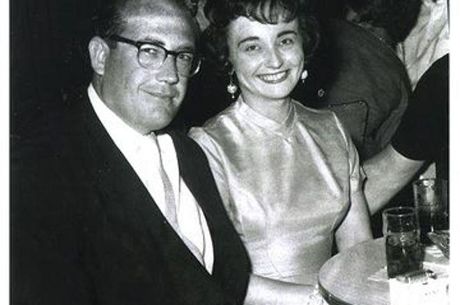From the Poker Vaults: The Dunes

Before there was the Bellagio, before there was the Horseshoe, even before there was the Aladdin, there was the Dunes. It was, quite simply, the place to play poker in Las Vegas in the late 1960s and early 1970s.
But, first, a brief history. When the Dunes Hotel and Casino opened in 1955, it was immediately hailed as the classiest resort on all of Las Vegas Boulevard. Featuring a 30-foot-tall statue of a sultan outside and famed Hollywood actress and dancer Vera-Ellen performing in the “Magic Carpet Revue” inside, the casino attracted a steady stream of high rollers from all across the country. Despite its outward appearance of opulence, however, the casino struggled just to stay afloat during its early years.
In an effort to drum up more business, its owners — including the notorious Major Riddle — weren’t afraid to try a few gimmicks. In 1957, the casino hosted the Minsky’s Follies, the first topless cabaret ever featured on the Strip. In 1969, Sid Wyman, who had taken over principal ownership of the casino from Riddle, devised a publicity stunt obviously influenced by the famed poker duel between Johnny Moss and Nick “The Greek” Dandalos staged just outside the entrance of Binion’s Horseshoe Casino in 1951.
Hoping the sight of men betting thousands of dollars against each other would attract more gamblers to the Dunes, Wyman allowed a few of the Texas road gamblers to spread a high-stakes game of no-limit Texas hold’em just outside the entrance of his main showroom. This was the first big no-limit game ever played on the Strip, and it proved to be highly successful, at least for the players who played in it. After trying and failing to get a profitable and steady game going at the Golden Nugget in the late 1960s, the original caretakers of no-limit hold’em were happy to give this new venue a try. What their game needed to survive simply didn’t exist downtown. “We never got any drop-ins down at the Golden Nugget of any consequence, no producers,” explained Crandell Addington. “They were all good players in the games that we spread down there.”
The move to the Strip infused new life, and more importantly more money, into the game. “When we spread the game at the Dunes, we did begin to get some drop-ins who would often lose $100,000 or $200,000,” continued Addington. “They might have won it at the craps table or playing blackjack, and they’d come and lose it to us.” The game at the Dunes possessed what the game at the Golden Nugget never did: fish for the sharks to feed on.
Once the game began to attract a steady supply of producers, local players like Jimmy Casella, “Suitcase” Sam Angel, and Tom Abdo abandoned any pretense that they would only play razz and stud and became regulars in the no-limit hold’em game at the Dunes. The presence of such players ensured that the game would not only survive but flourish. In fact, the high-stakes game at the Dunes eventually got so popular that management had to erect several more tables and cordon off the area with a rope so that the railbirds couldn’t get too close to the players.
From the outset the biggest supporter of the game at the Dunes was always the casino’s owner, Sid Wyman, and under his tutelage it finally realized a sense of stability it had never managed to attain at the Golden Nugget. The value of his contribution, not only to his own game but to poker in general, was recognized in 1979 when he was inducted into the Poker Hall of Fame as a charter member.
When Wyman wasn’t busy overseeing the game at the Dunes, he would on occasion sit down and play in it. A novice at no-limit hold’em when it first started getting played at his casino, he taught himself the nuances of the game by observing how the road gamblers from Texas played it. He paid particular attention to Addington.
“I’m going to sit next to you,” Wyman told him. “I’m going to learn from watching you.”
“Well, I can’t show you my hands, and I sure can’t coach you,” Addington responded. “These guys would go wild.”
“That’s alright. I’ll get enough of a handle on it just by doing this.”
And he did. Within months he proved capable of holding his own in the game. At the very least, he didn’t lose control of his casino in a card game as did his predecessor, Major Riddle.
When Wyman died in 1978, the Dunes effectively died with him. In less than a decade the hotel and casino went from being a high-class resort to a shabby relic of a bygone era. Steve Wynn bought the property in 1992 and did the only sensible thing, razing the decrepit structures and starting anew. In its place he built the Bellagio where the spirit of the game that was played just outside the entrance to the Dunes lives on in the mythic encounters that take place inside Bobby’s Room whenever the Big Game is played.








